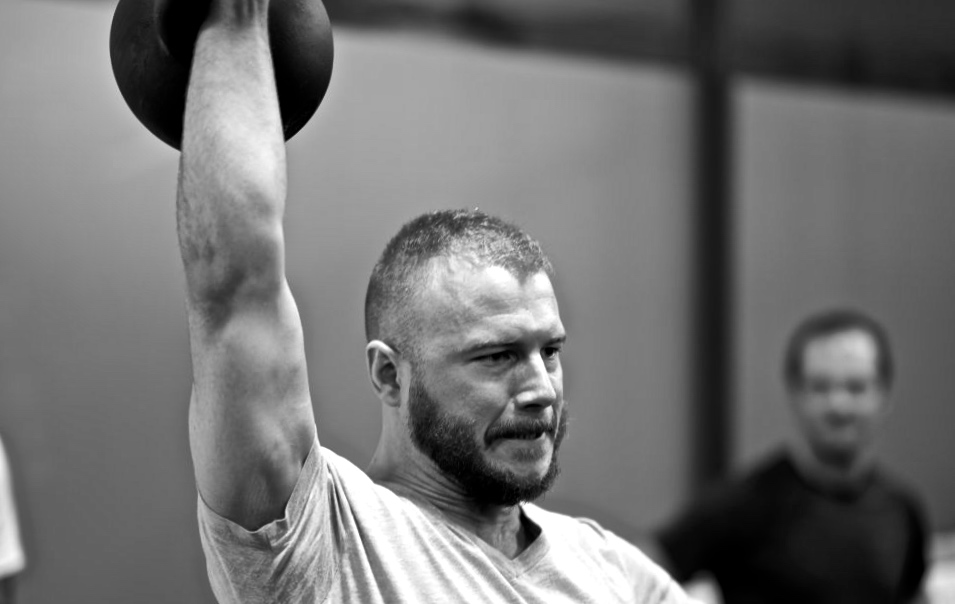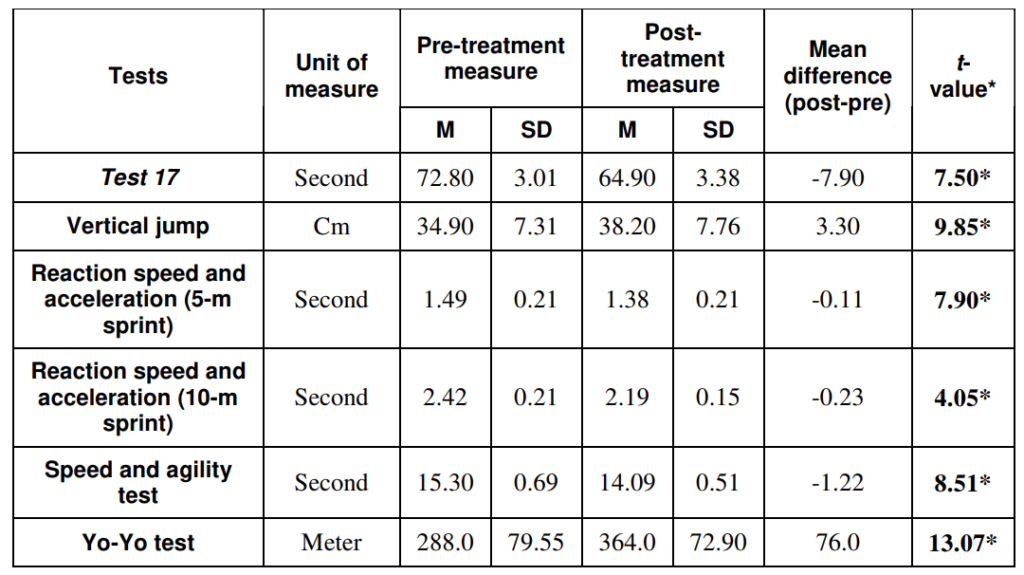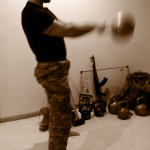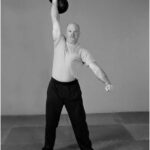Professional strength and conditioning coaches have utilized many different approaches to training athletes. Izumi Tabata trained Olympic-class speed skaters with 20 seconds on, 10 seconds off. This training is quite different than what the skater would experience in competition. On the other hand, basketball coaches train ‘suicides’ to closely simulate running up and down the court at full speed. Does your training need to closely emulate your competitive event? In this article I hypothesize that not only does your training not have to emulate your competition, but at times you might benefit from different conditioning protocols. Granted a basketball player still needs to practice plays and shoot the basketball, but maybe suicide drills could be replaced by other conditioning activities. Fighters will still need to practice fighting. There should be sport-specific training, but conditioning duration for sport can vary. Our conditioning does not have to be the same as our sport.

Master SFG Doug Nepodal adds:
“Years ago I trained two brothers who were trying to make it big in the world of supercross (one of the most dangerous and brutal sports on the planet). As you can imagine, the school of thought is nothing shocking. It goes like this. Since the sport is one of the hardest things a human can do, your training needs to be 10 times harder! This means brutal workouts and tons of cardio via bicycle. Here is the problem. They also practice on their motorcycle every day—often for hours.
My thought process was quite different. If the primary goal is being fast on your motorcycle, then if your workout leaves you drained for your riding (which is your sport-specific training), then I’m not doing my job. Do you want to win your workouts in the gym or your races at the track?“
Our Strong Endurance™ and All-Terrain Conditioning™ events are full of data on different methods of conditioning. We have seen many people perform better at the TSC, Certifications, and other activities doing protocols that are quite different than the activity. Soviet researchers found years ago that track and field athletes do not need to run their race repeatedly to get better at running that race. Verkhoshansky is known for his innovative depth jumps, which has been watered down and replaced with our modern day plyometrics. These activities look nothing like sprinting. However, these activities helped sprinters break through plateaus and dominate international competition.
Terminology
Let me start with some simple terminology that is often used in conditioning. Tabata (1996) examined amateur athletic males in their mid twenties. He had one group do a sixty-minute moderate-intensity biking session. The second group pedaled for 20 seconds, followed by 10 seconds of rest, for 4 minutes (completing 7 to 8 sets total) at maximal effort. This 20-second on, 10-second off became known as the Tabata protocol. It was quite successful and has become the basis for many high-intensity interval training (HIIT) training protocols. HIIT varies on the duration of work. However, rest periods are usually short enough where the person does not recover fully. HIIT training has been successful for many physiological and athletic outcomes. It simulates many athletic activities as well.
Another conditioning protocol is based on Verkhoshansky’s anti-glycolytic training (AGT) and Phil Maffetone’s work with triathletes. In these training paradigms, the athlete keeps the heart rate below a certain level to build aerobic conditioning and to limit the amount of glycolytic conditioning. These protocols have been quite successful in building endurance. In the forum, you will see many people referring to these protocols as alactic + aerobic (A+A) or anti-glycolytic. These protocols are different from training in that the athletes has to slow down or even stop if their activity puts them into glycolytic training. Imagine a high level marathoner having to stop and walk up a hill as her heart rate goes over 145.
In the 1930s, Woldemar Gerschler, a German track coach, and cardiologist Herbert Reindel alternated work and rest intervals to develop cardiorespiratory endurance. Their innovative idea was that the training effect occurred during the rest, not the training. These methods have evolved into ultra short race pace training (USRPT)—not the catchiest name. The basic principle is that the person will perform an activity at a high intensity for a short time period, but rest until the heart rate recovers. Over time, the rest periods would shorten as the person could recover faster. In the below figure from Astrand & Rodahl, 1977, we can see the USRPT protocol in the bottom line. In this example, the work was 10 seconds and the rest was 20. It allowed the athletes to recover and not build up lactate.

The forum lists many AGT style protocols that was the basis for Pavel’s earlier work on conditioning. More recent protocols from Pavel, used in Strong Endurance™ and All-Terrain Conditioning™, use both AGT and USRPT styles of protocols. His methods are refined techniques based on these earlier protocols. Strong Endurance™ does not equal AGT, although AGT protocols are part of Strong Endurance™.
USRPT in Basketball Players
Fattah and Fahmy (2017) studied basketball players using a USRPT style program. This program consisted of sport specific drills with the goal of maximizing the rest periods, so the athlete could perform it at the same level each time. Thus, the goal was not exhaustion, but quick drills with enough rest to perform it again at the same level. The comparison group performed the same drills without the emphasis on resting enough to perform it at optimal capacity. As you might expect, the USRPT athletes improved on all outcomes.

Accelerometer Data
We have been testing our most recent protocols with an accelerometer to measure drop off in power. In the below display, you will see that by optimizing rest periods we can maintain power throughout training. The figure shows 10 sets of 10 kettlebell swings with maintained power throughout.

Summary and Take Home Points
The work of Tabata and HIIT protocols show that the intensity of your conditioning is important. However, your rest period might be just as (if not more) important than the intensity. Rest is where you recover and prepare for your next movement. Over time, you can shorten your rest as your recovery quickens. With early AGT style programs, we try to maintain our heart rate below a certain number to maximize aerobic conditioning. With USRPT work mentioned above, your heart rate will go quite high, but you need to make sure to recover sufficiently enough to maintain the power or speed of your competitive work. As Pavel said years ago in a Muscle Media article, do not train your tennis serve by serving until you can barely lift your arm (see below quote). Your conditioning work should also be done in a similar manner. You do not have to train in sport-like conditioning until you are puking on the floor. Maybe a nuanced approach where we train with optimal power, enough rest, and then again with optimal power is the best approach.
How do you improve your tennis serve? Do you hit the court once a week and keep on serving until your balls could not knock out a sick mosquito and you can barely lift your arm? No, you come to the court as often as possible, ideally more than once per day, and slam those little yellow balls until you feel that your serves are about to slow down.






Nice article Craig.
Just wondering what the work : rest ratio was to maintain power across those 10 sest of 10 swings?
Interesting that the second half of the sets seemed to have slightly greater power. ‘Stimulating interval’ in display right there.
Hello Rob,
It was a 1:3 work to rest ratio (about 15 seconds on and 45 seconds rest). The power increase was probably because I lacked a good warm-up. Awesome observations.
Hey Craig
Super interesting article. I’m wondering about the time scale on the last chart under Accelerometer Data.
It looks like it’s not to scale (time wise). I’m wondering if the rest intervals were varied (lengthened) as the exercise went on to allow for recovering from the cumulative effects of the workout and to fully recover? And if so, what this was based on – heart rate, participant’s gut feeling, etc.
I’m doing much the same thing myself using Joel Jamieson’s HRV monitor.
Very nice work. Thanks.
Great observation Rich. The x-axis does not show the rest periods. The protocol has specific timings to ensure adequate rest. Heart rate could also be used to measure inter-set recovery. HRV is fascinating. We used it (actually RSA) in my lab a few years ago to measure parasympathetic activation (along with HR for sympathetic). I use it now to measure morning recovery. Cool stuff.
I’ve been starting to think similarly recently. My four days of judo training a week are quite intense. Overdoing it by doing yet more stuff that mimics judo moves on the side has just made me too sore sometimes to train properly. I admit I still haven’t figured out the balance. In any case, I LOVE S&S – what a fascinating activity, so S&S is its own goal for me, but in terms of what to do to improve my judo further through supplementary training – not sure.
Send me an email and I might have a good research protocol for you.
Wonderful article. Well written, helpful. Good for all ages.
Thanks Sara.
Conditioning as a supplement to sport specific training. Not the main event. As a supplement, it should supply work capacity to the entire body.
Supplements are not the main course, however they balance out what the meal may be lacking in terms of nutrients.
Awesome post, Craig! Ive found myself rereading many of your articles.
Thanks for the kind words.
Thanks Craig.
Really good stuff…
Thanks. I appreciate it.
Another excellent article, thank you Craig! I like the Doug Nepodal quote, one of the most clear eyed, plain speaking and effective coaches I have ever met.
I agree, Doug is brilliant.
Great article. Makes perfect sense. I didn’t know all this science, but I have been doing my workouts like this for a couple of years now. Now it’s nice to know how it works.
Great intuition on your part. Thanks for the kind words.
Craig,
Excellent article! Thank you for sharing the history and evolution of HIIT training. This was great insight to show where the Tabata protocol originated from.
Your reference to a marathoner slowing down while walking up a hill reminded me of the experiences Mark Allen shared during his seminar . He commented that early in the training season he would often walk up hills when running or pedal easy on a long climb to keep his heart rate at or below MAF number and let his competition pass him by. When it came race time at Kona he would be able to pull away from his competitors, the same ones that dropped him early in the training season!
I am excited to learn more at the StrongEndurance seminar in May.
Thank you for sharing.
Thanks Joe. Great story about Mark Allen. I look forward to seeing you in May.